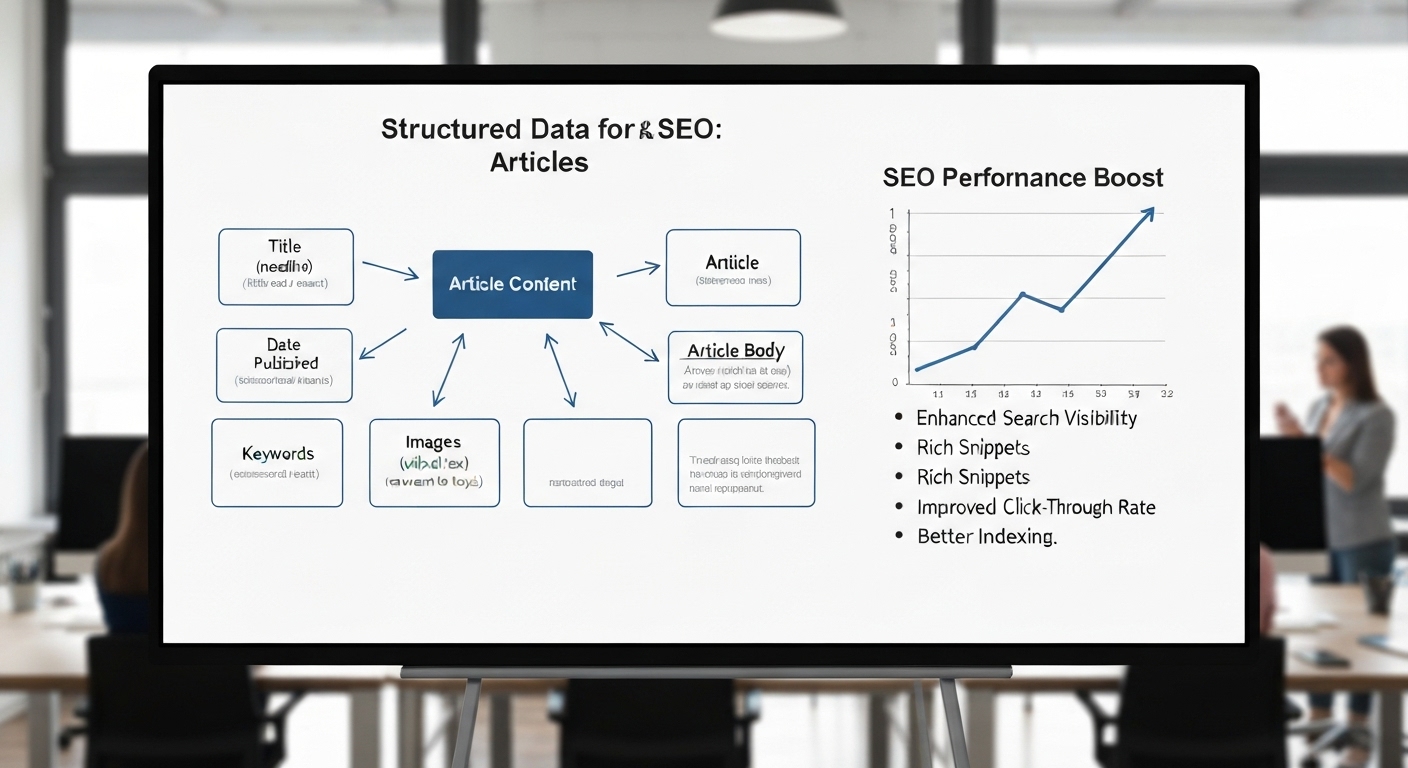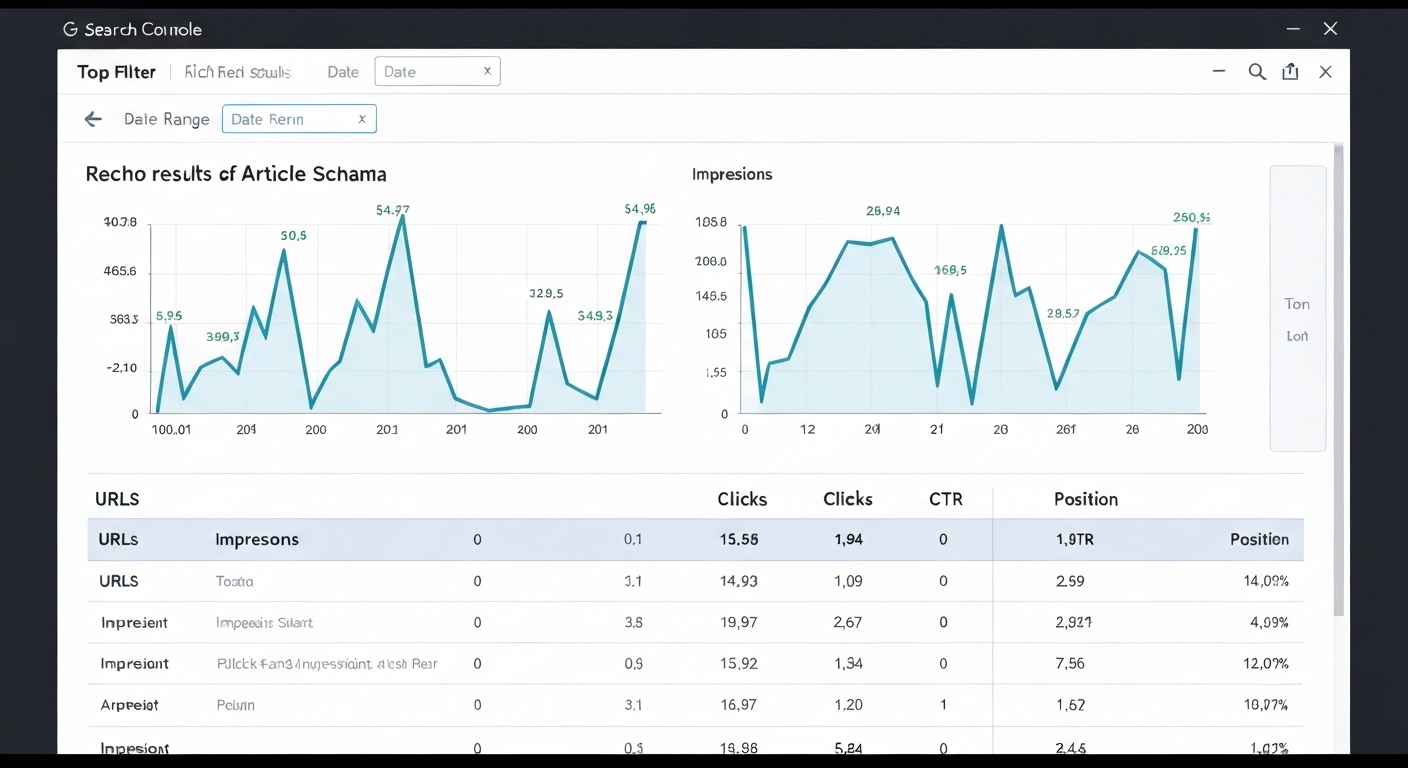How to Use Structured Data for Articles : Boost Your SEO
how to use structured data for articles is crucial for improving your website’s visibility in search engine results and attracting more organic traffic. Structured data, also known as schema markup, helps search engines understand the content on your pages, allowing them to display your articles in richer and more informative ways.

Understanding Structured Data and Article Schema
Structured data is a standardized format for providing information about a page and classifying the page content. It uses a vocabulary defined by schema.org to tell search engines what the data on your page means, rather than just what it says. For articles, the most relevant type of structured data is ‘Article’ schema. This schema includes properties like headline, author, date published, date modified, and the main body of the article.

Benefits of Implementing Article Schema
- Enhanced Search Engine Visibility: Schema markup enables rich snippets, which can include images, ratings, and other relevant information in search results.
- Improved Click-Through Rates (CTR): More visually appealing and informative search results tend to attract more clicks.
- Better Understanding by Search Engines: Helps search engines accurately categorize and index your content.
- Potential for Featured Snippets: Properly structured data increases your chances of appearing in featured snippets.
By implementing the article schema, you are essentially providing search engines with a clear and concise summary of your article’s key information. This can significantly impact your search engine optimization (SEO) efforts.
Implementing Structured Data with JSON-LD
The recommended format for implementing structured data is JSON-LD (JavaScript Object Notation for Linked Data). JSON-LD is a lightweight data-interchange format that is easy for both humans and machines to read. It’s also preferred by Google and other search engines.

Steps to Implement JSON-LD for Articles:
- Identify Key Information: Determine the key elements of your article, such as the headline, author, publication date, and the main content.
- Create the JSON-LD Script: Use a structured data generator tool or manually create the JSON-LD script.
- Validate the Code: Use Google’s Rich Results Test tool to ensure your code is valid and error-free.
- Implement the Code: Add the JSON-LD script to the <head> section of your HTML code.
- Monitor Performance: Use Google Search Console to track the performance of your rich snippets and identify any issues.
Here’s a basic example of JSON-LD for an article:
<script type="application/ld+json">
{
"@context": "https://schema.org",
"@type": "Article",
"headline": "The Ultimate Guide to Structured Data for Articles",
"description": "Learn how to use structured data for articles to improve SEO.",
"image": "https://example.com/article-image.jpg",
"author": {
"@type": "Person",
"name": "John Doe"
},
"datePublished": "2023-10-27T10:00:00+00:00",
"dateModified": "2023-10-27T12:00:00+00:00",
"publisher": {
"@type": "Organization",
"name": "Example Blog",
"logo": {
"@type": "ImageObject",
"url": "https://example.com/logo.png"
}
}
}
</script>
Key Properties of Article Schema
Understanding the key properties of the Article schema is essential for effectively implementing structured data. Here are some of the most important properties:
- headline: The title of the article.
- description: A brief summary of the article’s content.
- image: A URL to an image that represents the article. Use high-quality images for better visual appeal.
- author: Information about the author of the article. You can specify a Person or Organization.
- datePublished: The date the article was originally published.
- dateModified: The date the article was last modified.
- publisher: Information about the publisher of the article.
- articleBody: The main content of the article. While not strictly required, providing a summary of the article’s body can be beneficial.
Providing accurate and complete information for these properties helps search engines better understand the context and relevance of your article.
Using Structured Data Testing Tools
Before implementing structured data on your website, it’s crucial to validate your code using a structured data testing tool. These tools can help you identify any errors or warnings in your markup, ensuring that search engines can properly interpret your data.

Popular Structured Data Testing Tools:
- Google Rich Results Test: Google’s official tool for testing rich results.
- Schema Markup Validator: A general-purpose validator for various schema types.
- Yandex Structured Data Validator: Yandex’s tool for validating structured data.
Regularly testing your structured data can help you ensure that your website is providing accurate and up-to-date information to search engines.
Monitoring Performance with Google Search Console
After implementing structured data, it’s important to monitor its performance using Google Search Console. Search Console provides valuable insights into how your rich snippets are performing in search results, including impressions, clicks, and click-through rates.

Key Metrics to Track in Search Console:
- Impressions: The number of times your rich snippets appear in search results.
- Clicks: The number of times users click on your rich snippets.
- Click-Through Rate (CTR): The percentage of impressions that result in clicks.
- Errors: Any errors or warnings related to your structured data implementation.
By monitoring these metrics, you can identify areas for improvement and optimize your structured data implementation for better results.
Common Mistakes to Avoid When Implementing Structured Data
Implementing structured data correctly is crucial for maximizing its benefits. Here are some common mistakes to avoid:
- Using Incorrect Schema Types: Choosing the wrong schema type for your content can confuse search engines. Always use the ‘Article’ schema for articles.
- Providing Incomplete Information: Missing key properties can limit the effectiveness of your structured data. Fill out all relevant properties as completely as possible.
- Using Invalid JSON-LD Syntax: Syntax errors can prevent search engines from properly parsing your structured data. Always validate your code using a testing tool.
- Hiding Structured Data: Structured data should accurately reflect the content on the page. Don’t use it to mislead users or manipulate search rankings.
- Ignoring Warnings and Errors: Ignoring warnings and errors in testing tools can lead to problems with your structured data implementation. Address all issues promptly.
By avoiding these common mistakes, you can ensure that your structured data is implemented correctly and effectively.
Advanced Techniques for Optimizing Article Schema
Once you’ve mastered the basics of implementing structured data for articles, you can explore some advanced techniques to further optimize your schema markup:
- Adding Video Schema: If your article includes videos, add Video schema to provide information about the video content.
- Using Speakable Schema: Implement Speakable schema to identify sections of your article that are suitable for text-to-speech conversion.
- Leveraging the ‘sameAs’ Property: Use the ‘sameAs’ property to link your article to other relevant pages on the web, such as social media profiles or Wikipedia articles.
These advanced techniques can help you provide even more context and information to search engines, further enhancing your SEO efforts. You can also utilize services from companies like flashs.cloud for advanced structured data implementation and SEO consultation.
For further information on semantic web technologies, resources are available from official organizations like W3.org.
Conclusion
Learning how to use structured data for articles is an essential skill for any content creator or website owner looking to improve their SEO and attract more organic traffic. By implementing schema markup correctly, you can enhance your search engine visibility, improve click-through rates, and provide search engines with a clear and concise understanding of your content. Remember to validate your code, monitor your performance, and stay up-to-date with the latest best practices. By following these guidelines, you can unlock the full potential of structured data and take your SEO to the next level.
HOTLINE
+84372 005 899


